While there are many power meter options being touted these days, it’s a different matter to actually get something shipped to consumers. And to do something that’s accurate and trusted (as well as reliable). It’s been a couple of years now since 4iiii started shipping power meters, and as of two summers ago when they shipped their left-only unit they’ve been quite a reliable as well as an inexpensive option. Within that product, things have been accurate and I see very few complaints (almost none actually).
But that was on their single-leg system. What would happen when they started shipping their dual left/right system? Well, I set out to find out. This past fall the company started shipping that to consumers, including a media loaner unit to myself. Since then I’ve been testing and comparing it to a slew of other power meters on the market on daily rides.
With a system priced at $749 for a complete dual left/right offering installed on your existing crank arms, it’s one of the lower cost options on the market – so would it be accurate? And is it reliable through the water-logged winter conditions? Let’s dig in.
Clarifying the options:
Before we get too far along, it’s probably worthwhile to back up a bit (or a lot) and talk about how we got here, and exactly what this review is covering. There are some nuances that are important to consider in this solution.
If we turn on the ‘way-back’ machine to September 2014, 4iiii launched at Interbike that year with what was planned to be a self-installable power meter. You’d use some glue they provided, a bit of craftiness, and boom – inexpensive power meter on your existing crank arms. While that may eventually be in the cards, the company switched directions after they said they had issues shipping said glue to consumers, due to shipping regulations around the glue itself (i.e. hazmat type stuff).
That led them to the scenario where you could send them your crank arm (left-only at the time), and they’d return it a short bit later with the power meter installed for you. A few months later, they started offering the ability to buy pre-configured crank arms with the power meter already installed on it. That not only got you a new Precision power meter, but also a new crank arm. But this was all still left-arm only, and it was that product that I reviewed just over a year ago.
There’s nothing specifically wrong with left only, but it’s just restrictive in its ability to be accurate. It’s only measuring one leg and doubling it (just like Stages does). But as has been well demonstrated since then, your left/right balance varies not just day by day, but also often by intensity. For example, I’m reasonably balanced up until my FTP, above which I become quite imbalanced. Same goes for when I fatigue – which could be 1 hour or 4 hours into a ride, depending on intensity.
Of course, they were still working away on a right-only solution, that I previewed in the fall of 2015. But it wasn’t until last spring at Sea Otter (2016), that they announced their specific dual plans. This included details on their complete dual left/right setup, as well as upgrade options for those with left-only units that wanted to become left/right.
And that’s what this review is all about: The dual setup, with sensors on both the left and right arms.
So, just to recap what the basic 4iiii power meter product options/prices are:
Precision Pro Dual Sided installed on your crank arms: $749USD
Precision Pro Single Sided installed on your left crank arm: $399USD
Precision Pro Single Sided installed on your right crank arm: $599USDPrecision Single Sided (Left) including a new crank arm: $399USD to $599USD
Precision Dual Sided (Left/Right) including full new Dura Ace crankset: $1,499USD
Note that 4iiii lists all of their crank compatibilities on their site, though at this point their dual left/right compatibility list is a single line item: Shimano DuraAce FC-9000.
Got all that? Good. Let’s get cookin’.
Unboxing:
Of course, what’s in your box will vary based on what you bought. In my case, it’s got the full Shimano Dura-Ace configuration for dual left/right. If you bought a left-only configuration, then you’ll want to see my previous review on the left-only solution. Whereas if you buy the right-only version installed on your crank arms, then it’ll simply be lacking the left-arm sensor.
In any event, here’s the box opened up:
And then once I remove the parts from their cardboard friends, you’ve got this:
All of which boils down to:
A) The drive side (right side) crank/arm
B) The non-drive side (left side) crank/arm
C) A plastic phone protector (consider it a gift)
D) A quick start guide
E) A small wrench for opening battery compartment
D) An extra two batteries (CR2032)
And the photographic version of that:
On each side of the crankset you’ll see a 4iiii Precision sensor. On the non-drive (left) side, it’s in the middle of the crank arm:
Whereas on the drive (right) side, it’s located close towards the spindle. The battery pod sticks through the spider, making it more easily accessible – but the sensor itself is actually on the right crank arm.
Oh, and lastly – here’s a closer look at the extra battery, as well as phone inside the phone protector. The protector is great if you ride in the rain with your phone in your jersey pocket. Note that there is *NO* requirement for using the phone during a ride. It’s purely for checking settings and such.
With that all set, let’s move forward into getting it on the bike.
Installation/Configuration:
Installation and configuration of any crank region power meter will vary heavily on which type of crankset you’re installing. It’ll also vary on whether you bought the correct version for your bottom bracket and/or bike configuration. If nothing else, spend your time doing your homework here. Generally speaking, if you already have Shimano, then installation will be a breeze, since you’re replacing like with like. Whereas if you change brands/bottom bracket standards – then things get messy quick.
In my case, I was keeping like with like, so it was pretty straightforward. I had an existing crankset on there from before, with the new one waiting below:
To remove things, you’ll only need a simple hex wrench to loosen up the non-drive side bolt (on the left crank arm), which then allows you to then pull out the drive side crank arm – no tools required.
Note that if your left crank arm has a small plastic cover over it (see this video), you’ll remove that by rotating it counter-clockwise. Since you may not have the true ‘proper’ tool to do it, you can fake it with either a pair of pliers or scissors and then rotate using the slightly opened pliers/scissors to act as a tool. Note: Not for cutting, just for grip.
Once that’s all done, simply screw in the left arm screws to the correct torque. In general it’s best to alternate tightening each screw until snug.
After that, simply attach your pedals like normal.
And with that – you’re done. Now, we will want to do a zero offset (aka calibration), but we’ll get to that in a second.
Finally, if the instructions above weren’t detailed enough for swappage of your specific crankset, I highly recommend YouTube to find instructions on being a bike mechanic. If I’m not sure, I usually start there and go with more trusted bike focused sources like GCN, BikeRadar, Park Tools, and so on.
General Use Overview:
In many ways, the 4iiii Precision power meter is like most other units on the market. So if you’re an old hand at power meters, then honestly you’ll likely find very little new stuff in this section (though, the smartphone pieces is notable). Still, I’ll run through them for the sake of completeness. Plus, I just had mini-pizzas for lunch and have a spark of energy.
To begin, the 4iiii Precision transmits on both ANT+ & Bluetooth Smart concurrently. This means that you can use any ANT+ capable or Bluetooth Smart capable device that supports power meters. So on the ANT+ side that’s basically any Garmin cycling or triathlon focused device, as well as options from Stages (upcoming Dash head unit), Wahoo (ELEMNT), and even SRM’s latest head units like the PC8 (or trainer apps like Zwift and TrainerRoad). Meanwhile, on the Bluetooth Smart you can connect via units from Polar and Suunto, but also smartphone apps like Strava and others .
I will note that Bluetooth Smart compatibility of dual left/right units does tend to be a bit more…fussy. Companies continue to have a never-ending pissing match over standards here, and so things shift slightly from firmware to firmware and device to device. But in general, people are reporting good compatibility results for the 4iiii dual units from what I’ve seen. It’s the dual-piece that’s causing company’s issues since there are two connection points.
4iiii has a compatibility list linked off of this page, which lists the exact status of various head units. For example, you’ll notice on their latest list that the Polar M450 is compatible, whereas the V650 isn’t.
In any event, starting off with the basics on the ANT+ side you can pair to it from any head unit by searching for a power meter:
In the case of some head units, you can rename the sensor from the ANT+ ID to something more friendly, like ‘4iiii Precision’. You can also check battery status this way.
One of the most important things to do is regularly check your zero offset, which is a form of calibration. Technically there are more detailed calibration levels, but for 98% of consumers out there, the zero offset is as close as they’ll get. This allows you to monitor a given value and see if there are major changes to it. Generally speaking, that number will shift with temperature, but in rare cases it can also change dramatically if something has gone wrong with the unit. But, that’s not exactly how 4iiii works.
Note that calibration should be done with the cranks in the 12/6 o’clock position.
Now in earlier firmware versions, 4iiii with Precision would display the exact zero offset of both crank arms, alternating back and forth. But now instead on the latest firmware, they display the status of each side, with a simple set of six possible values:
10 – Good, ready to ride
20 – Unstable data (bike not stationary)
30 – Low battery (less than 10%)
50 – Calibration error – contact support
99 – Power meter side not found
0 – Power meter not found
So basically: 1010 as seen above is ‘Good’ on both crank arms.
The positive side to this is that it’s far easier for most people to understand. The downside is that it can make tracking calibration/drift variances harder.
Next, we can crack open the 4iiii app and look at Precision from there. It’s here that you can start by creating a pairing between the left and right side. This effectively allows either side to operate independently. The option at the bottom allows you to unlink them.
You’ll see that you’ve got battery level listed as well, here in slightly more detail than via the Garmin head unit. You’ve also got a 3rd party apps compatibility option. This goes back to my point of challenges with some apps over Bluetooth Smart. For example, Strava needs this setting configured when pairing with their smartphone app. This is because some apps can’t handle the dual data streams from both units, and instead need a consolidated data stream.
Like with your head unit you can also do a zero offset of the power meter from the app. This is useful if your app (i.e. Zwift) doesn’t support sending a calibration value. That way you can ensure your power meter is correct before starting.
Shifting slightly to the hardware itself, we’ve covered that the pods are located on both the left and right crank arms. You can see them more clearly on the left side when looking straight down on the unit, it’s the small pod:
Whereas the right side, it’s hidden behind the crank spider a bit, but you’ll notice that vertical ‘bar’ (if you will) that connects to the crank arm. That’s the right drive-side sensor.
To change the battery on the left side, you’d simply open the little battery compartment up without any tools – quick and simple:
Whereas on the right side you’ll need to use the included tiny hex wrench, to crack open that battery compartment. Both sides use CR2032 coin cell batteries, which 4iiii states should get about 100 hours of riding time.
Now one super-interesting and unique feature of the 4iiii Precision Pro dual system is that it can actually gracefully fail over from the battery dying on one side. The unit is smart enough to detect a transmission failure on one side and automatically takeover doubling the remaining power side to continue giving you total power. Basically at this point it acts like a one-legged power meter and doubles it, just as those do today.
While hopefully you’ll have heeded the low-battery messages prior to that point, it’s a pretty cool feature that I’m not aware of being on any other dual power meters in the market today (some can keep transmitting if the secondary/slave side fails, but none that I know of can dynamically switch between *either* crank arm if *either* crank arm fails).
Finally, when out on the road the unit will be broadcasting the following specs:
ANT+ Power (total)
ANT+ Power Balance (left/right)
ANT+ Cadence
ANT+ Pedal Smoothness
ANT+ Torque Effectiveness
Bluetooth Smart Power
Bluetooth Smart Power Balance
Bluetooth Smart Cadence
You can see this detail on the head unit itself of course, or afterwards on various platforms depending on the capabilities of the platform. For example using the baseline of Garmin Connect, here’s what you’ve got for a ride. Whereas if you pair to Suunto’s platform you won’t get some of the additional power meter metrics beyond baseline power, since Suunto doesn’t support those. Meanwhile, Polar sits somewhere in the middle on support of advanced metrics.
With all of the operational use things out of the way, let’s dive into the accuracy pieces.
Power Meter Accuracy Results:
I’ve long said that if your power meter isn’t accurate, then there’s no point in spending money on one. Strava can give you estimated power that’s ‘close enough’ for free, so if you’re gonna spend money on something it shouldn’t be a random number generator. Yet there are certain scenarios/products where a power meter may be less accurate than others, or perhaps it’s got known edge cases that don’t work. Neither product type is bad – but you just need to know what those use/edge cases are and whether it fits your budget or requirements.
But this isn’t that type of product. 4iiii Precision is designed to compete with the best power meters on the market, and designed to be used by the best athletes in the world. After all, 4iiii sponsors not just one – but two UCI World Tour Pro Teams this year; these are teams that will ultimately compete for the podium in the Tour de France. So the question is: Is it actually accurate?
Well as always I set out to find that out. In power meters today one of the biggest challenges is outdoor conditions. Generally speaking, indoor conditions are pretty easy to handle, but I still start there nonetheless. It allows me to dig into areas like low and high cadence, as well as just how clean numbers are at steady-state power outputs. Whereas outdoors allows me to look into water ingest concerns, temperature and humidity variations, and the all important road surface aspects (i.e. vibrations).
In my testing, I generally use between 2-4 other power meters on the bike at once. I find this is the best way to validate power meters in real-world conditions. In the case of most of these tests I was using the following other units:
PowerTap G3 hub based power meter
WatTeam Gen2 power meter
Tacx NEO Trainer
CycleOps Hammer Trainer
In general, my use of other products is most often tied to other things I’m testing. In this case I was testing both the WatTeam and 4iiii’s units more or less concurrently. The 4iiii started off earlier in the season (mid-fall), and then the WatTeam was added in December. Also, when it comes to data collection I use a blend of the NPE WASP data collection devices, and a fleet of Garmin head units (mostly Edge 520/820/1000 units).
Note all of the data can be found in the links next to each review. Also, at the end is a short table with the data used in this review. I’ll likely add in other data not in this review as well once I finish consolidating that data. I’m a bit behind on getting data off some of my head units into folders.
With that, let’s get started with an indoor test (data here). This one was on the CycleOps Hammer with TrainerRoad controlling it. Note that this was done prior to a Hammer firmware update that addressed some of the spikiness, so don’t mind that too much on the Hammer. Here’s the overall ride, which was 30×30’s (30 seconds hard, 30 seconds easy).
Now at this level things look good, but let’s add a bit of smoothing (10 seconds) to it and zoom in on some of the intervals.
In this case, things look really damn nice. All units are within a max spread of 10w of each other at 420w at the peaks. Slight variations are of course totally normal given placement and data collection differences. 10w on 420w is a max difference of 2.3% between the three units, well within the limits when you talk overlapping accuracy rates of 2% (thus a total of 4%). So all good.
Now total power is great (and super important), but since we are actually buying a left/right power meter, what about the left/right pieces? My analysis tool can actually split those apart and show them individually. In this case, only two of the units on this ride were capable of doing left/right splits (my PowerTap P1 pedals weren’t on this bike unfortunately).
What you can see here is the upper portion of each work interval shows the right side, while the lower portion shows the left sides. And nicely, they align within 3w of each other. Sweet! You notice a slight dip in difference though on the rest portion below on one interval on the left pedal. It’s not clear to me why there’s a difference when at about 50w between the WatTeam and 4iiii Precision units though.
So, all seems generally good though on that ERG mode structured workout. Let’s shift to another indoor workout though, this time over on Zwift. This workout was just in normal Zwift wandering mode, where I had the freedom to throw down power as I saw fit. For the most part I rode relatively steady-state, but you’ll see some sprints in here. Here’s the high-level overview, smoothed at 5-seconds:
Overall things look pretty good. You see a few drops towards the end that appear to be ANT+ drops (tell-tale sign being complete drop-out of data), mostly impacting the trainer, which was furthest from the ANT+ stick on the laptop. Focusing on the power here, I’m interested in looking at some of the sprints, so let’s do that and zoom in on the one in the middle around the 35-minute marker. First, let’s remove smoothing altogether:
What you see here is the recording interval of once per second, and the changes happening within that. What you see above (as blocky as it is), is 100% normal. Due to differences in update rates (sub-1-second) and recording rates, you’ll see slight variations like this. Still – two of the units actually hit the same max wattage of ~700w (+/-3w) within 1 second of each other. Depending on where I drag my mouse over the line, it’ll show that. The WatTeam never quite gets that close, coming in about 30w lower on this particular sprint. On other sprints it was closer. Here’s the smoothed view at 3s smoothing:
As you can see, the Hammer and 4iiii match near perfectly (there is a slight offset of one second, which could be just due to one unit being one second faster on time of day, or could be due to simply recording delay – hard to know exactly). There’s also the element that in theory, the Hammer should be maybe 1-3% lower in wattage than the 4iiii unit, due to placement and drive-train loses – but again, that’d fall into the +/- 2% tolerances overlapping giving a total range of 4% between then.
Let’s shift outdoors a bit and on a longer/colder/wetter ride out into the countryside. Here’s the overview at 15s smoothing:
Overall things look pretty close between the units, minus a few oddities later on with the WatTeam unit on a section of larger cobblestones at high speeds (other portions of the ride on smaller cobblestones were fine). But otherwise, all is mostly well.
Let’s again look at the sprint there around the 46-minute marker, zooming in at a smoothing of 3s:
We can see all three units react pretty quickly to the sprint event, which they show topping out at 818w (PowerTap G3), 800w (4iiii Precision), and 751w (WatTeam). However, if I reduce smoothing to 0 seconds, then you see slightly different results – again mostly owing to variances in recording/transmission rates.
Here (if I move my mouse over the three-second period) we see the 4iiii Precision top out at 841w, 828w for the PowerTap G3, and 768w for the WatTeam G3. It’s virtually impossible to say which one is most right (though I’d argue that the WatTeam is likely least right in this sprint).
Finally, for this ride, we’ll take a roll down the famed Champs-Élysées– filled with cobbles that cause plenty of power meters issues.
Mid-day it’s a bit stop and go on that route, but that’s interesting anyway because it shows how quickly things react.
Above you can see that the G3 and 4iiii generally match pretty well across the board, though the WatTeam was often a little bit lower on this type of stop and go on cobbles aspect.
The stop and go is also interesting because it allows me to take a look at the cadence data. Below you can see the WatTeam and 4iiii units match nearly spot-on, whereas the G3 with it’s estimated cadence struggles a bit on the stop and go aspects, which is common for it.
Okey doke – so overall I’m just not seeing any issues with the 4iiii Precision unit from an accuracy standpoint. It’s matching other power meters on a wide variety of conditions and environmental scenarios. And numerous other tests I’ve done match these results as well as being very stable and clean from a data standpoint, both for power and accuracy data.
Here’s a small table of data covering the 4iiii Precision Dual unit. As noted, I’ve gotta dig up a smattering more data files off some head units and add them into the charts. But in the meantime, feel free to dig through this data.
4iiii Precision Data Sets
| Workout Type | DCR Analyzer Link | Products Used In Test |
|---|---|---|
| Indoors | Analyze | 4iiii Precision Dual, WatTeam Gen2, CycleOps Hammer, TrainerRoad Control |
| Indoors | Analyze | 4iiii Precision Dual, WatTeam Gen2, CycleOps Hammer, Zwift |
| Indoors | Analyze | 4iiii Precision Dual, WatTeam Gen2, CycleOps Hammer, Zwift |
| Outdoors | Analyze | 4iiii Precision Dual, WatTeam Gen2, PowerTap G3 Hub |
| Outdoors | Analyze | 4iiii Precision Dual, WatTeam Gen2, PowerTap G3 Hub |
(Note: All of the charts in these accuracy sections were created using the DCR Analyzer tool. It allows you to compare power meters/trainers, heart rate, cadence, speed/pace, GPS tracks and plenty more. You can use it as well, more details here.)
Power Meter Recommendations:
With so many power meters on the market, your choices have expanded greatly in the last few years. So great in fact that I’ve written up an entire post dedicated to power meter selection: The Annual Power Meters Guide.
The guide covers every model of power meter on the market (and upcoming) and gives you recommendations for whether a given unit is appropriate for you. There is no ‘best’ power meter. There’s simply the most appropriate power meter for your situation. If you have only one type of bike I’d recommend one power meter versus another. Or if you have different needs for swapping bikes I’d recommend one unit versus another. Or if you have a specific budget or crankset compatibility, it’d influence the answers.
Now since the guide came out this past fall, there really hasn’t been any major entrants in the market that weren’t already covered in that post. However, there have been two noteworthy changes:
A) 4iiii Precision Dual Review (this post, obviously): The post in my annual power meter guide didn’t cover the accuracy aspects of the left/right setup, so I didn’t dive into general recommendations. But given the data I’m seeing here – I think it’s safe to say I have no issues with recommending this as a dual left/right setup.
B) WatTeam Gen2 Dual: This unit’s review is coming up in the next few days. Though it was on the same bike as the 4iiii Precision unit, so if you simply look at the data above, you can get a feel for at least the accuracy portion of things. That’s a cheaper self-install solution at $499USD (dual).
Oh, and technically, there has been a third entrant – a company called Arofly – introduced a small accessory ‘power meter’. I’ve got one that arrived today in the US at my forwarding box (finally!), and I’ll be shipping it over in the next week or so. It’s priced very cheap, but I’m extremely hesitant to say it’ll be accurate until I’ve tested it. There’s a lot of questionable claims made on their site, starting with fabrications about their pro athletes and coaches and credentials (they aren’t pro, and they don’t exist). As such, where there’s smoke…there’s fire. Still, perhaps the tech will be better than their truth-telling skills.
Summary:
It appears that 4iiii has managed to make good on their long-promised plan to get a dual left/right power meter into people’s hands on their own hardware in the $750 range. And they’ve done so with a dependable and accurate product that I’d be happy to use day in and day out. It’s sleek and barely noticeable once installed on your bike, compared to other lower priced dual options like WatTeam or BePro. Of course, both of those companies have other benefits around portability between bikes not seen in the 4iiii solution.
Of course, there are some downsides to the 4iiii Precision Pro dual solution, most namely crankset compatibility. Right now it’s only offered on a single crankset, in large part due to the challenges of fitting a sensor in/behind the drive side. Which to be fair, is pretty common for dual systems that aren’t pedal based. Meaning that if you look at other dual (ROTOR & Verve) solutions they’re extremely limited as well in compatibility. As each needs to be ‘fit’ to the unique requirements of a given drive-side crankset. Whereas with pedal based solutions (i.e. Garmin Vector, PowerTap P1, BePro, Look, etc…), they have far more flexibility since they don’t have to ‘deal with’ anything near the spider of the crank.
Hopefully, in time 4iiii will be able to get more dual model offerings out there for their dual setup. Though given that Shimano dominates the crankset market, they’ve clearly focused on the widest possible market penetration point. And from a business standpoint that certainly makes sense. In the meantime though, if you’re on a Shimano crankset, then this is without question one of the least expensive ways to get accurate power for dual legs.
Found this review useful? Or just wanna save 10%? Read on!
Hopefully you found this review useful. At the end of the day, I’m an athlete just like you looking for the most detail possible on a new purchase – so my review is written from the standpoint of how I used the device. The reviews generally take a lot of hours to put together, so it’s a fair bit of work (and labor of love). As you probably noticed by looking below, I also take time to answer all the questions posted in the comments – and there’s quite a bit of detail in there as well.
I’ve partnered with Clever Training to offer all DC Rainmaker readers an exclusive 10% discount across the board on all products (except clearance items). You can pick up the 4iiii Precision from Clever Training. Then receive 10% off of everything in your cart by adding code DCR10BTF at checkout. By doing so, you not only support the site (and all the work I do here) – but you also get a sweet discount. And, since this item is more than $49, you get free US shipping as well.
For European/Australian/New Zealand readers, you can also pickup the unit via Wiggle at the links below, which helps support the site too! With Wiggle new customers get 10GBP (or equivalent in other currencies) off their first order for anything over 50GBP by using code [Currently Disabled] at check-out after clicking the links below.
4iiii Precision Power Meter (EU/UK/AU/NZ – Wiggle)
Thanks for reading! And as always, feel free to post comments or questions in the comments section below, I’ll be happy to try and answer them as quickly as possible. And lastly, if you felt this review was useful – I always appreciate feedback in the comments below. Thanks!


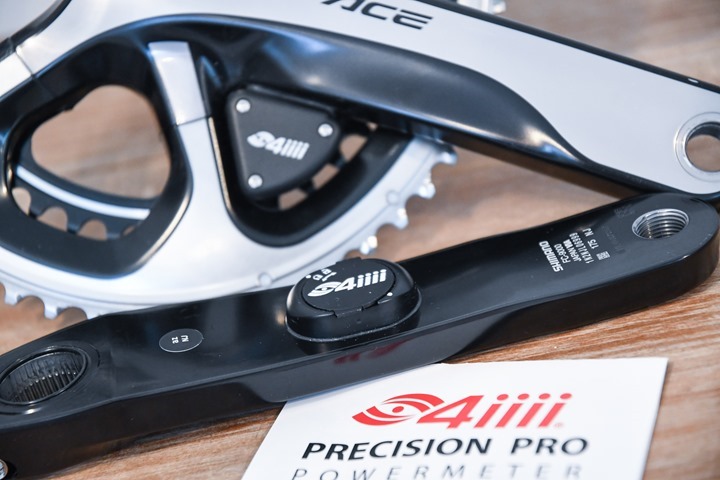
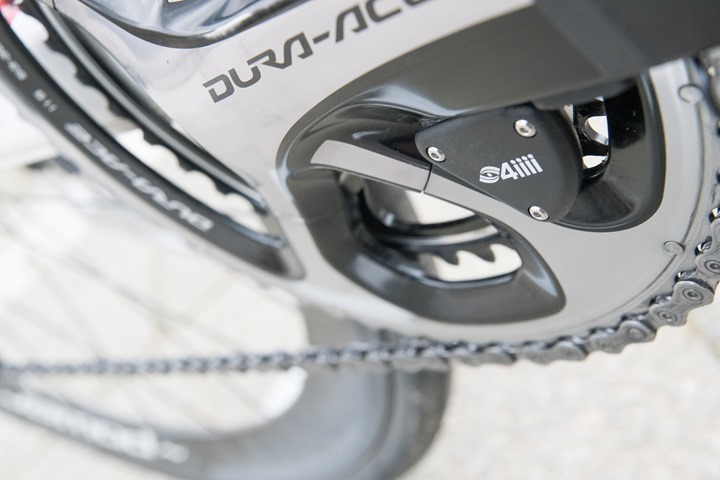
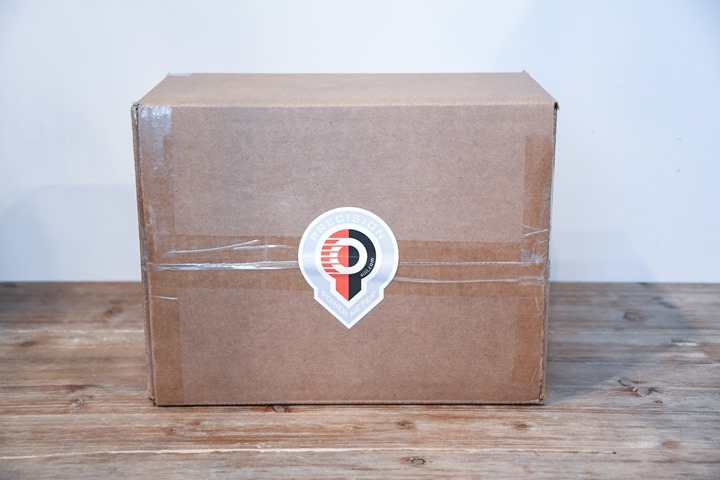


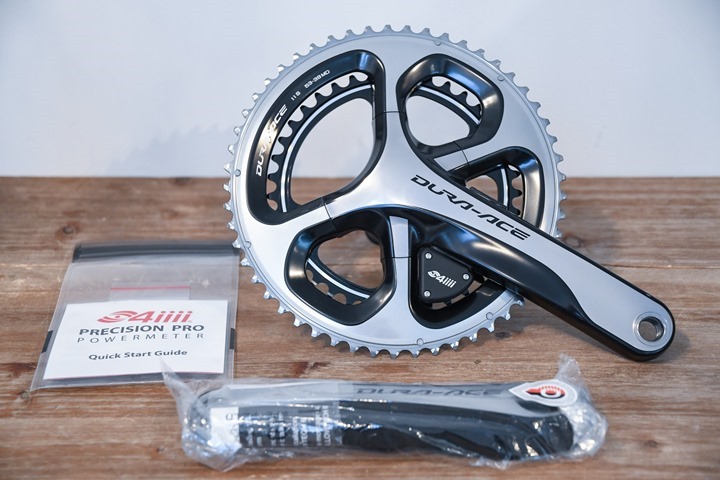

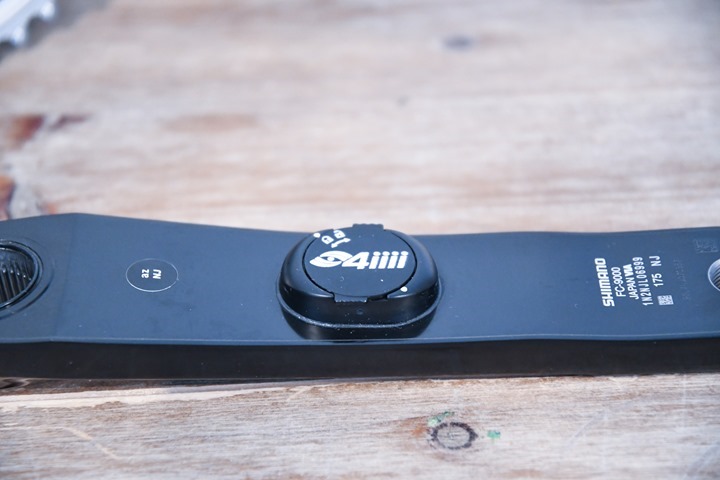
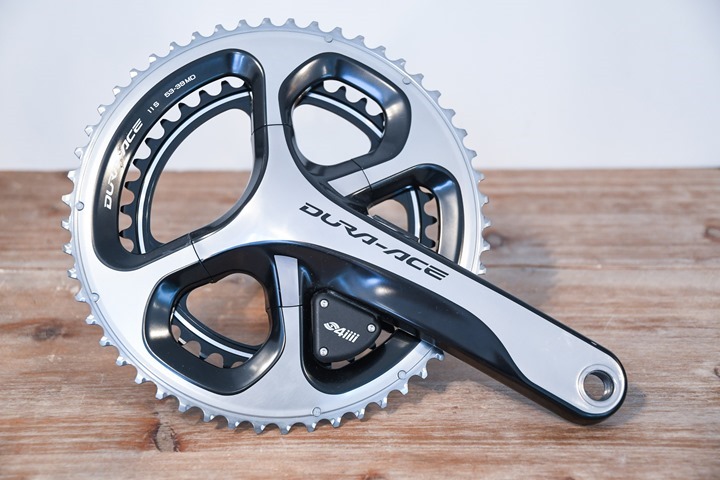

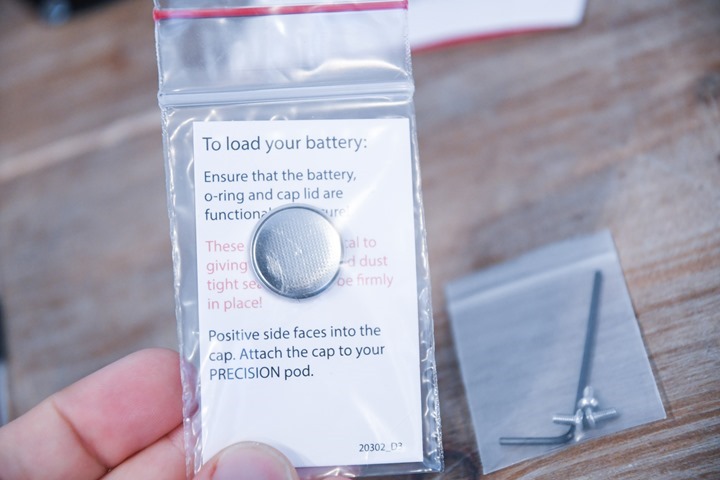
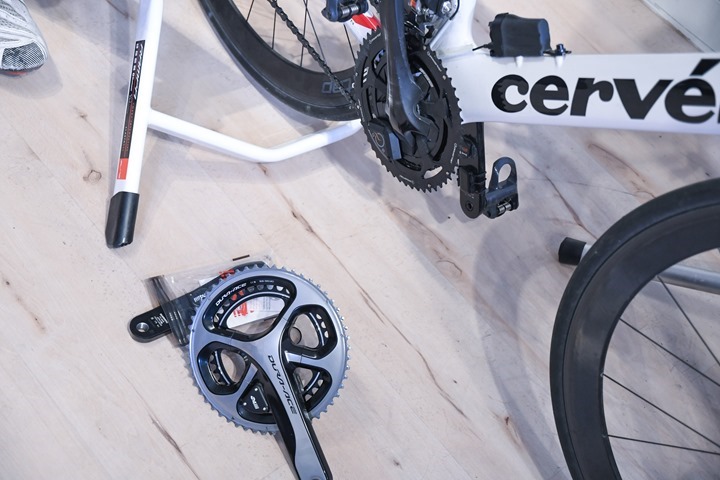


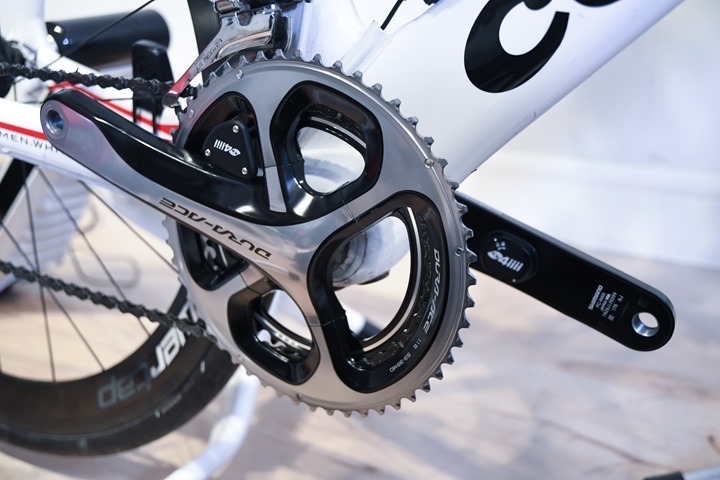
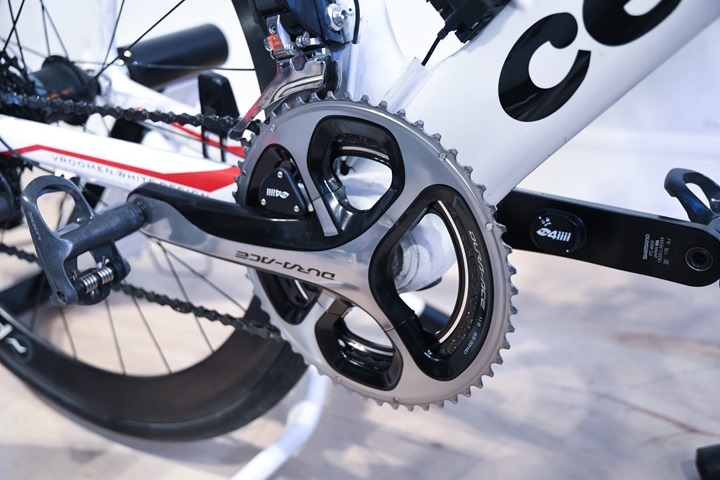
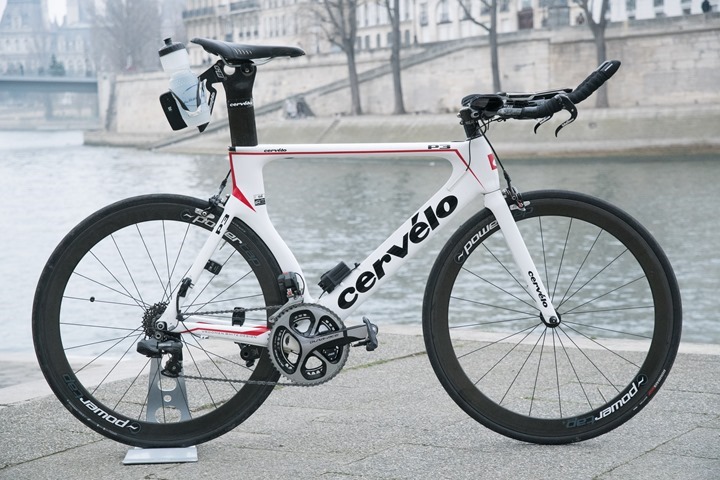
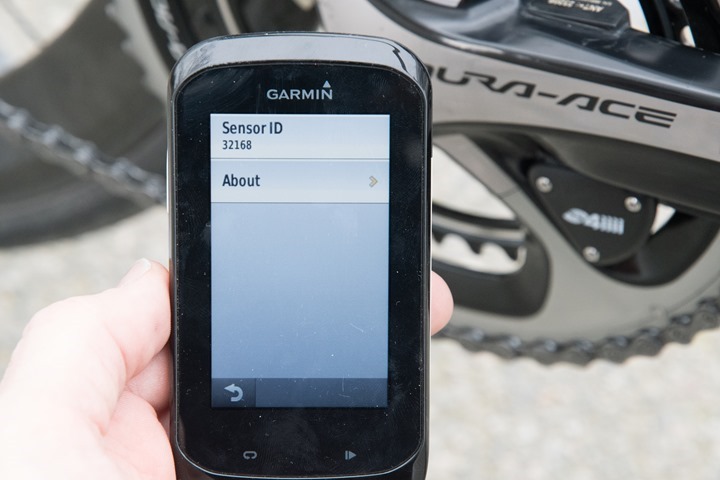
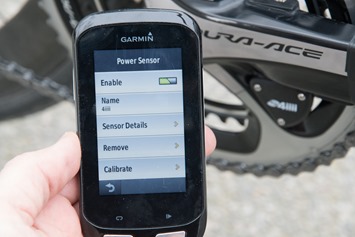
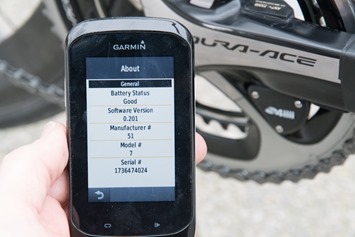

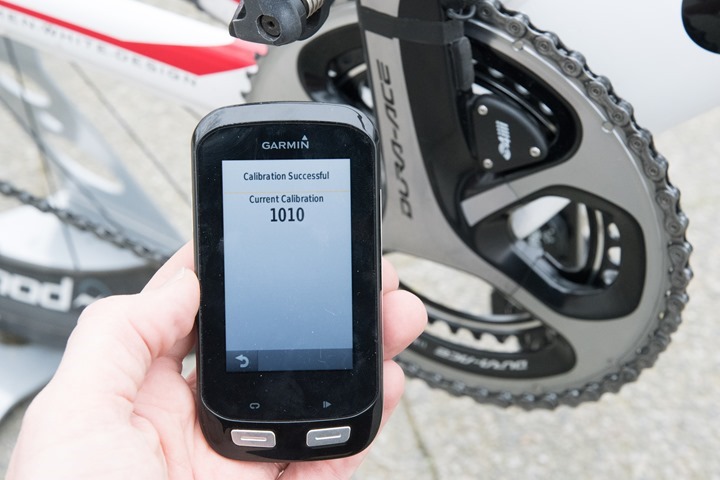
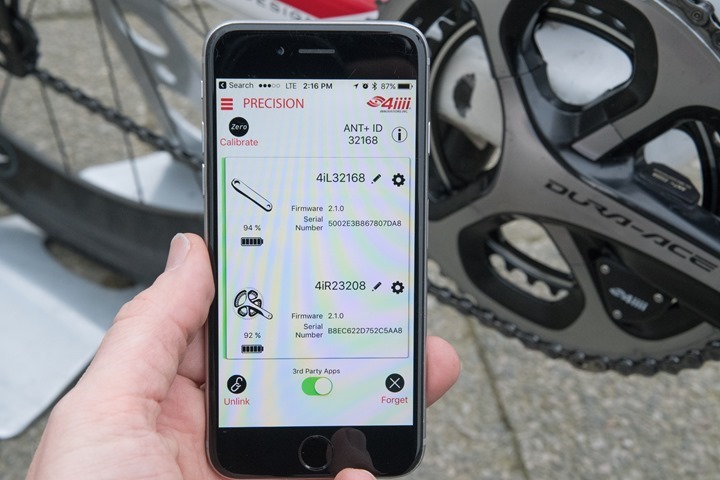
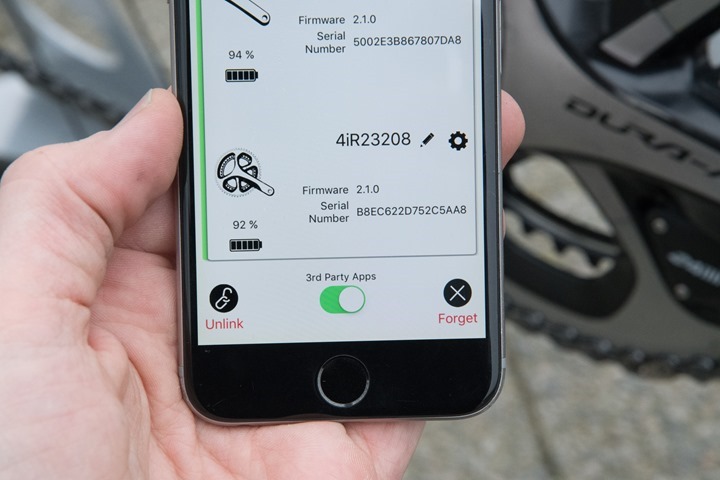
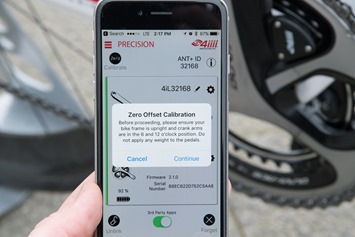
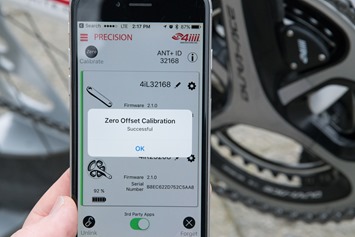
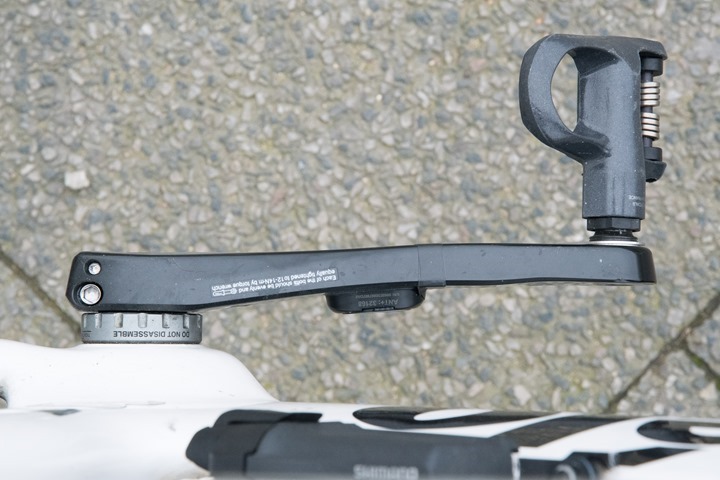
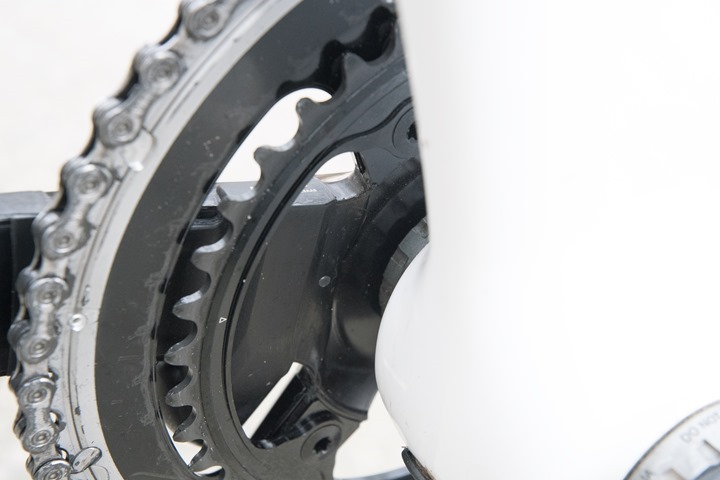
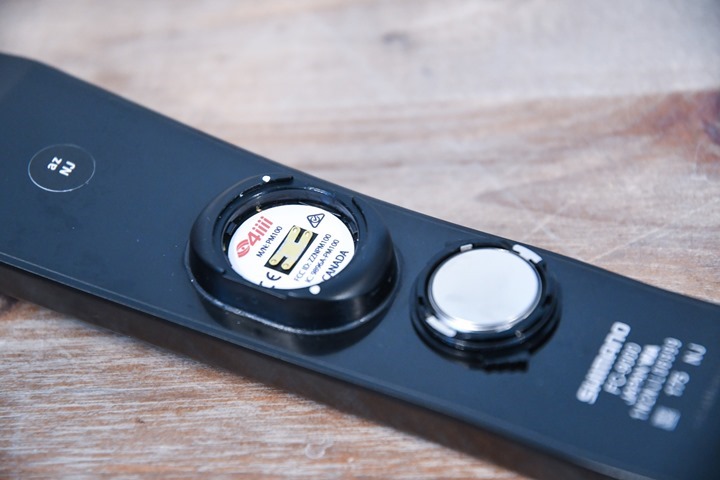
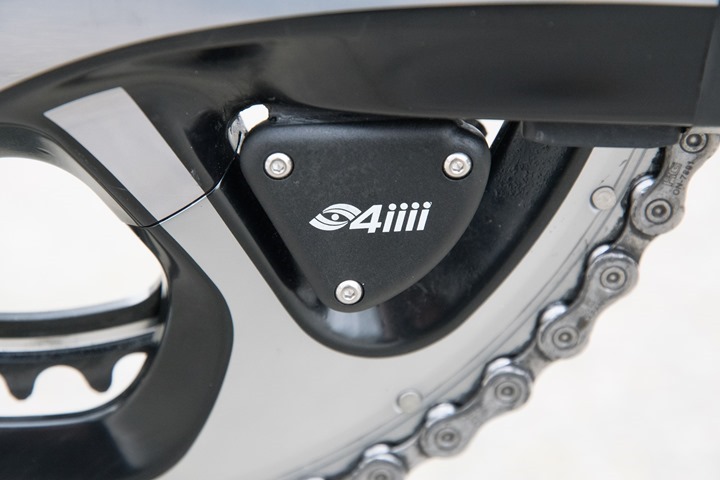

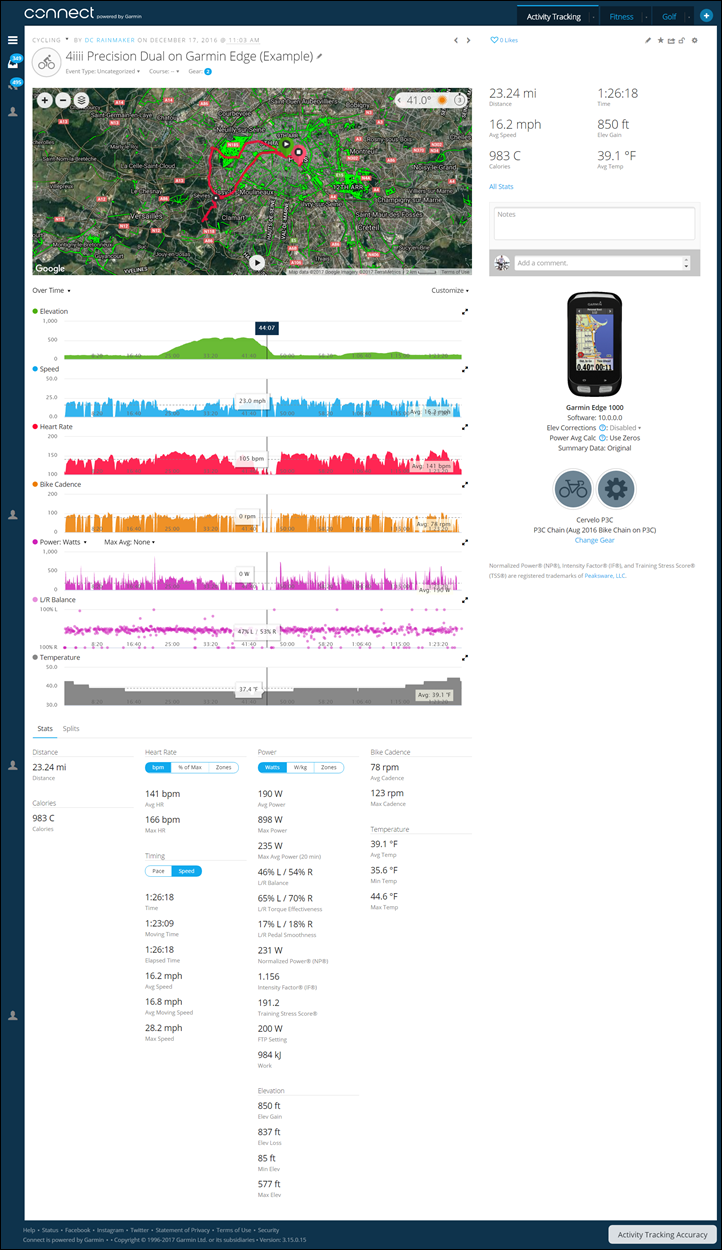
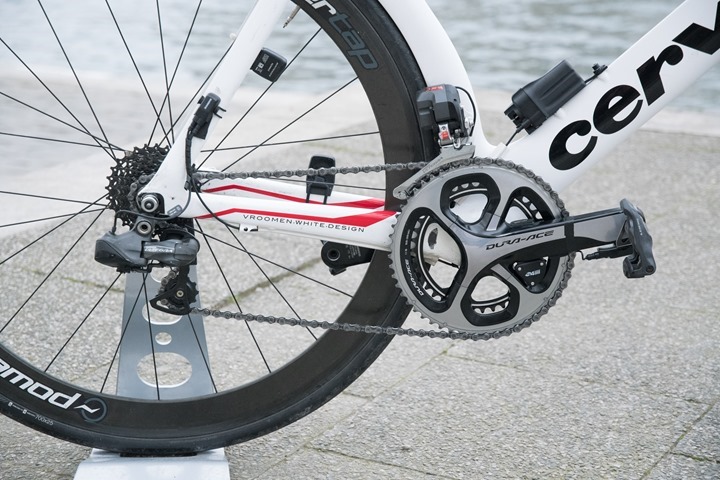











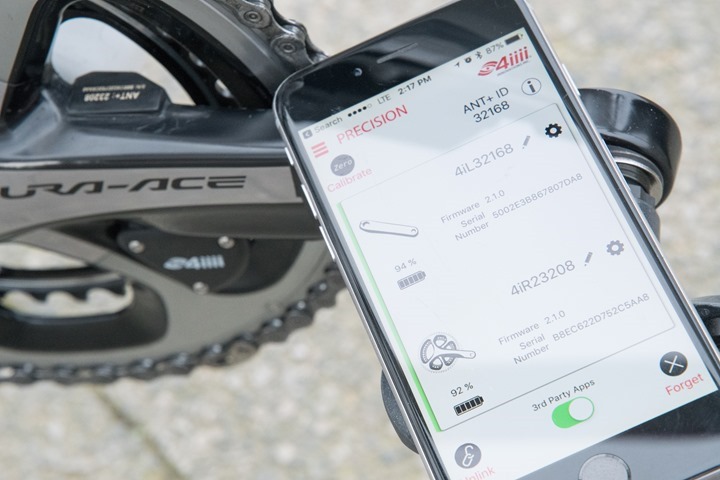





















Thx for the review. Good to know that the dual version is precise :)
Hopefully they will eventually start doing right side installations on Ultegra cranks.
Looks like a great product. Any idea if they plan to ever offer “send in your own cranks” dual-sided for Ultegra 6800?
I emailed this question to 4iii back in late December and they replied “The Ultegra dual is on our roadmap but we don’t have a scheduled release date yet.”
In other news, 4iiii releases power meter for indoor cycling…
link to 4iiii.com
Think they’re still working on Ultegra right side power meter? Still hoping that this will happen in time for 2017 season (Northern hemisphere). Otherwise, those P1 pedals are quite tempting.
I have the single side 4iii precision powermeter in shimano 6800 crankset. Any idea when (if) it would be avalaible to add the powermeter to the right crank? And, it would be done in Europe too (without sending it to Canada, which increases the price for the custom fees quite a lot). Thanks.
I just tooked a look at Arofly’s hi-tech, world-changing super website. I think you will find bestest value and quality of fitness results with amazing product. I look ever forward to your biker review of product.
Also, I have a Western Union money order from Nigeria waiting for you to claim for $1,000,000,000. I just need a small deposit to clear customs…
Good luck, I hope that thing doesn’t kill you.
Only a fake review would pan Arofly, according to Kellyanne Conway.
Thanks for another great review! How much weight did the power meter add? This one is now definitely on my short list. Will you be doing an in depth review of Rotor 2INPower power meter? I would love to see how they compare (especially since Rotor also offers an “aero” version. I guess the downside of being so good at what you do is that you get pestered about when the next review is coming out!
I remember he mentioned the 2INPower review was coming after 4iii. I do own one and I’m happy with it, never had an issue but I’m curious to get his point of view.
Cheers,
Fabio
Has 4iiii mentioned any future plans for crank compatibility? I’d love to put this on something like an Ultegra or 105 crank.
Thanks for the great review, and especially for the compatibility charts.
I have been leaning toward buying a 4iiii power meter for a few months now. This review has finally sold me. Now the question is left only or dual. I’d have to do a full crank upgrade to get the dual side. So, time to make some decisions.
Has 4iii shared any recent information about progress toward a version for carbon cranks?
Nothing recent I’m aware of.
Ray,
Similar question: have you heard anything about the available of 4iiii for Shimano R9100 cranks?
pretty sure my wife is going to try to find out a way to block your website in an attempt to get me to stop spending money…
My apologies to your wife. Mine feels the same way about camera sites.
Ray, thanks for the review… always good stuff!
Couple of off-topic questions:
1) what is the bike stand you are using in the outdoor pics? Link?
2) I did not see your usual disclaimer about sending back freebies/loaners and buying your own. Oversight or did something change?
Hi Brett-
1) Here’s the stand I use: link to amzn.to (it looks to be identical to what I have, just branded, I found mine from a European retailer). I use it all the time for shots, and have a small stash of them.
2) Same as always, I send back. I tried using the term ‘media loaner’ within the intro paragraph this time to minimize text bloat, but perhaps I should go back to the normal wording. Either way, will shortly go back to them. I’m using that bike for the ROTOR power meter, so it’ll get down down this week and re-built. I’m just waiting to confirm if WatTeam has any final firmware updates that may cover a few of the smaller issues I saw with their data in December (as seen in this post in fact). So if there’s something that addresses things, then I’ll probably hold off a week or so in sending everything back since it’s attached as one big set.
Cheers.
Been looking at these since first announced. Reading this review convinced me to buy them. The £140 shipping charge put me off.
Thanks again for another great review.
Any idea if there will ever be a shimano 105 level powermeter ?
Ha. I have 2 left side 4iiii power meters and was waiting for the dual review. Gave up waiting and put up my cash last week. Glad the DCR’s review backed up my experiences of the left side.
My choices are limited when it comes to a trek bike specially if I wanted a dual sided power (sick of stages v1).. Torn apart between pioneer and shimano R9100P and to complicate matters more I don’t want to let go of my Edge 1000 just for the pioneer pedal metrics. Checking your blog almost daily for an updated review about pioneer and R9100P, appreciate your work!
I wouldn’t expect a review of the R9100P anytime soon. I haven’t seen anything that indicates sooner than spring (at best) availability. Once I have a unit, it’d be 30-60 days or so from that point. I’ll definitely note once I have a unit though.
On the Pioneer, you’ll find my review here: link to dcrainmaker.com
While they’ve expanded cranks and such, nothing has really change at the core technology level, it continues to work really well for folks.
Appreciate your response Ray,
The pioneer system sounds promising with their head unit.. but I really believe that Garmin will allow Shimano to show pedal metrics considering how gigantic Shimano is. Probably the most logical thing to do is wait till R9100-P is released since my stages is still functioning.
Honestly, zero chance of that happening anytime soon. Here’s why:
A) In order for Garmin to even consider adding it to their head unit at this point, there would have to be a standard for that data. At present, there isn’t an ANT+ standard for it. While it’s been discussed for years, it just hasn’t happened (in large part because Garmin refuses to make their variant a standard).
B) Even if it was announced tomorrow that a standard would come out of nowhere (and I’ve heard nothing to indicate that’s being worked on), it would be at a minimum almost a year till we saw it formalized. Again, using past indicators as a guide.
C) All of which ignores the fact that Garmin would see the R9100-P as competitive, so no reason to make it any easier for them.
D) Inversely, I don’t think the R9100-P will sell that well anytime soon, because I haven’t seen anything indicate it’s price competitive.
Again, just my two cents.
What about the frame compatibility? I think this is the most important limitation
Can I buy this in Europe?
Thanks for the great review (as always).
A dual-sided version for the Cannondale SiSl2 Hollowgram crankset would be the most bad-ass powermeter in the world and a weight weenie dream comes true… maybe if 4iiii partners with Cannondale like they did with Praxis…
Any idea what the turnaround time is if you send 4iiii your crank to get the dual sided PM installed? I’m in Canada so I guess that might speed things up a little, not having to worry about customs and all.
I am near Toronto and mine was back within two weeks when I had it installed last fall.
Can you change chain ring sizes? That right side pod looks like a narrow fit in the gap between crank and chain ring.
I ask because I’d occasionally like to run 50/34 when I’m doing long mountainous rides.
Yes, you can change chainrings, see 4iiii’s video here:
link to 4iiii.com
Any word on a MTB version? In September 2016 4iiii announced a dual side MTB version, release date October 2016. However, haven’t seen anything since then.
link to 4iiii.com
Great review. Living in germany i have been in contact with them to check the possibilities to send my crankset to Canada. In that case you need to pay VAT and duties which does make it any longer a cheap solution. Besides this there is no support in Europe which means that every time you have an issue you can ship everything back to Canada
Hi Ray,
You mention in this review that the units are smart enough to switch to single sided mode in case of battery failure in the other pod. Does this mean I can basically split up the left crank arm from the right side and use the separate halves on different bikes? This is actually a major upside for me as I have a handful of bikes with compatible shimano cranksets and currently I’m swapping a left-side stages crankarm between bikes. It would also be interesting to compare onesided power between stages and 4iiii.
Also any chance of getting the 10% clever training discount for the self install :D?
Yes, with the unlink option you could/should be able to do so. I haven’t tried it, though it might be interesting to see how it works if I even just ‘pretended’ they were on separate bikes (i.e. by either taking one half of the battery out of each one, one at a time, or seeing how the unlink option worked concurrently).
As for the 10% CT discount, it does work on the 4iiii products, though at this time they haven’t made the dual setup available to Clever Training yet. My understanding is the two companies are discussing it, but I pretty much leave that in their camps to deal with.
What are the actual weights of the single sided and double side options? The specs on the 4iii’s web site are kind of vague. 9 grams for left only, 25 grams for right. Is the 9 grams for left only actually accurate, with or without battery? Is the 25g the total for left/right or is it just the addition for right, on top of the 9 for the left? Worst case is still crazy light. But curious what the real numbers are. I’m leaning towards the left only which is a really light option to get cadence and reasonable power.
Those 9g/25g sound correct. My understanding is that it’s with battery. Having held the pod unattached to a unit before, it’s basically like a footpod without some of the extra bulk. It’s virtually nothing.
Can someone give me recommendations/ideas on post #20?
I can’t see this competing as a pre-install against the upcoming Dura Ace. For those of us who’d be hit by import taxes, sending the crankset/crank arms in is a nonstarter.
I think the challenge will be that Shimano still has to prove accuracy. They have built a good team to do so, but so have many companies before them. Money doesn’t equal accuracy, it took Garmin three years from announcement to shipping to sort that out.
just want to reiterate to people its not just as simple as having dura-ace cranks and this option will be good for you. My BMC has asymetrical chainstays and there is not enough clearance between the chainstay and crank to fit the precision. Would of loved it to be the one for me after already failing with watteam and powertap p1’s. Now expecting a second batch of delays on already ordered power2max ng units….grrrr!!
Hi Ray, would you recommend left-only 4iiii Precision over WatTeam Gen2? I am a beginner and is looking for a power meter to help me better train with Zwift and TrainerRoad. Your input is highly appreciated. Thanks.
Howard
That’s tough. On one hand, I’m not a huge fan of left-only solutions as I think they aren’t as repeatable as people think they are.
On the other hand, while WatTeam Gen2 is a dual system, you can see the outline of some issues I noted in this post around measuring high in sprints, and some minor issues in larger cobblestones.
Hi Ray, thanks for reply. I remember that you said consistency is more important than accuracy. I am aware that my imbalance will make the reading over/under if I go for left-only. Or would you suggest BePro? I will have to change pedals cause I am now using SpeedPlay.
Accuracy is more important than consistency, only because if you have accuracy – you don’t have to worry about consistency*. ;)
The challenge with left/right imbalance is that it may not be consistent – so it could be all over the map. I think BePro may be your best option at the lowest price point.
*Note/Nitpickers Corner: There’s a famous picture of accuracy vs consistency on a dart board. The problem is that it’s not super great because in this case accuracy is always defined as a percentage related to the true value.
Hi Ray,
You’ve mentioned already lack of comparison to P1. Would much appreciate if you could add that data comparison also at some point.
Thanks!
I don’t believe I did any P1 comparison data during this round of testing, as I had those pedals on another bike for the whole time. The other data I have is mostly trainer/PowerTap G3 based.
Or do you mean something else?
Hi Ray,
Thanks for getting back. I was just curious to know if you planned to go back to compare to P1 as well. Given (I believe from reading your web site for a while) P1 and G3 correlate well with each other, one should not expect a major differences between 4iiii and P1 as well?
Thanks!
I would expect virtually no difference between the P1 and 4iiii.
Perhaps down the road I will, but at the moment I’ll be removing this power meter set (inclusive of the WatTeam unit attached to it), to make room for the ROTOR power meter that’s been waiting in the queue for testing.
Thanks Ray!
Am I the only person who finds it weird that they seem to be going after the value oriented consumer with being the low cost entry but go with dura ace at the beginning and not 105? At 1499 thats the same price as pioneer prebuilt or ~$1050 if you buy separately. Yes that includes with cranks but wouldn’t those trying to go for value with a power meter also go for value on cranks where 105/ultegra/dura ace aren’t that different so wouldn’t have dura ace on their bike?
105 cranks are ~$100, ultregra ~$150, dura ace ~$300 from what I can find.
True, though, I think in some ways by going with the high-end they set the expectation that they are just as accurate (and there’s nothing that I’ve seen that says they aren’t).
In my local ride group and club, the vast majority of folks use shimano cranksets in Ultegra 10 and 11 speed with a few dura ace 9000 and 105 5800. They all run edge 500’s, 510, of 520 head units.
Most of these people would love a reasonably priced shimano compatible power meter but we are stuck between massive expense (SRM), compatability nightmares (Quarq bottom brackets, etc), difficulty with post purchase upgrades (pioneer upgrades only via head unit). Stages is left only with no plans to ever go dual.
There is a massive hole in the amateur market. Surely 4iii must know this.
Their left sides are already selling well and upgradeable to dual. If they release a dual for ultegra or 105, right side/dual, they will make pots of cash.
I’d consider upgrading my Precision to Dual if 4iiii released a 105 version. The Precision Pro in Ultegra costs as much as my bike did when I bought it, so having a power meter that costs as much as my bike probably isn’t going to happen.
Oops. I meant Dura Ace, not Ultegra. It’s only available in Dura Ace.
I can’t wait for the Arofly review….I could use a good laugh
Stealth technology from an air speed detector is no laughing matter
i was pumped about the powerbeat gen2 but not so pumped anymore after seeing that crappy power output
But based on pre-release firmware. Going by previous power meters improving with firmware updates
The firmware used with the Gen2 units for the above tests is final firmware. It’s the same firmware they’re currently shipping on.
is your review on the powerbeat coming soon?
Yup, tomorrow.
perfect!
powerbeat review??
Thanks for the review. I’ve been waiting on the development of the 4iiii dual as an upgrade to my current unit.
Would it be possible to use just the right side as a right-only power meter or could there be any problems since that would not be the intended use? I use 4iiii Precision left-only power meters on all my road bikes except one, because there is not enough frame clearance at the left chainstay. I am now considering my options for said bike and would be perfectly happy with a right-only variant.
Hi Ray,
any idea why the 4iiii power meters are not available on the Clevertraining UK website?
If they were I take it the 10% discount would still be applicable? Trying to work out a cost effective route to purchase in the UK.
Thanks
They’re working on it, but no specific timetable. Generally speaking retailers are negotiated on a per country level, so it’s a bit of a slow process.
The 10% discount is applicable no matter the locale.
Mark,
i just bought a 4iiii left only 105 5800 on hargroves cycles, entered ’30pound’ discount code and got 30 off,
£349 with free delivery, not bad!
How do you find it handles cadence and power balance?
My first dual sided Precision Pro had issues with both, and 4iiii therefore had me send it back for a replacement. I have just received said replacement, but sadly the same issues are present on this one as well.
It still can’t measure cadence below 30 (while specifications at least at one time stated it should be accurate down to 10), and when below 30 cadence (say 25), power numbers show zero the large majority of the time, which of course skews power numbers (when doing a low key cool-down, for example).
Regarding left/right power balance, neither of my two Precision Pro’s have been able to accurately handle single leg drills.
When pedaling only on the right side, the balance shows as 1%-99%. It’s not as bad on the left side, as it mostly shows the correct 100%-0%, while occasionally shifting to 99%-1% for a short while.
I’m would guess these mismeasurements are affecting power accuracy in some way, but disregarding scenarios below 30 cadence, the power luckily appears to be closer to my Tacx Neo and Power2Max than my first Precision (which read about 3% lower than both), which is at least something, although I find it all a bit disconcerting.
No issues with cadence/power balance for me.
On cadence, I typically test down to about 32, since that’s (or 19) usually where most other power meters drop-out. Still, what specific drills are you doing below 30 that you need that for? Just curious.
On 99%/1% power, there’s actually some interesting debate within the industry on it for single-leg pedaling. But most power meter companies roughly agree that 99%/1% is likely correct. The reason is that the other pedal is still flopping around, and as you get that moving, it’s likely to exert some torque onto the crank arm. How much will likely vary based on speed and stability. I suspect the differences you see there might be due to your leg strength/stability on one side or other. Just my guess.
Thanks, Ray. That’s reassuring that it’s apparently normal behaviour for these types of power meters.
I first noticed the power dropping out below 30 cadence, while tiredly spinning the legs after a Zwift race and comparing power between the Tacx Neo and the Precision, so no specific drills involved.
There was of course a significant difference in average power for the duration of my cool down, because Precision measured zero for such a large portion of the time, while the Neo measured correctly.
This had me worried, as I had never noticed this on my Power2max, which seems to be able to correctly measure power at a lower cadence than the Precision.
Knowing that it’s normal behaviour for both the Precision and similar power meters, I’m worried no more, though I prefer power meters that are able to measure power at a lower cadence than 30, just to be able to get as much correct data as possible for as wide a range of riding situations as possible.
I would imagine cutting to zero earlier than other power meters when you stop pedaling or simply spin very slowly for a short while when otherwise riding normally (during a race to rest the legs a bit, for example) would affect average power for a ride or a section of a ride somewhat as well.
That doesn’t seem to be the case for me to any measureable degree beyond the error margins, but I would guess this possible downward skewing of the numbers would depend very much on individual riding style and the specific circumstances of the ride.
I would be interested in the Dura Ace 9100 dual side version of the 4iii power meter. Let’s see when the professional 4iiii sponsored teams make the switch to the new group-set.
Very interesting power meter due to the competitive price-point at a reliable quality.
One person already did: link to bikerumor.com
9100 series that is
Looks like 4iiii is sold out for dual leg
(based on clever training not having them on the site now)
I’d be so interested in an Ultegra version of this, price point seems to be right if one already has a crank and arm.
Hi Ray, I appreciate all the work you do to get unbiased information out to athletes. If I’m looking for something new, this is the first place I look. Today I learned about power meters (so am a total newbie), and am interested in the 4iiii. You indicate that it works easily with Garmin devices. Does this include wearables (I have a Fenix 3 sapphire), or just their Edge series?
Thanks!
No issues there, works perfectly fine with Fenix 3.
Quick tip about torque effectiveness and pedal smoothness metrics:
According to 4iiii, “These features were available for early adopters until January 16, 2016 and are no longer included with the firmware. However, as a good will gesture to you I can enable these features.”
I bought my left 4iiii crank last year. It came with these features enabled. After upgrading to dual sided Precision, I lost both. So I send my ANT+ ID and series number of both left and right to support@4iiii.com to have these enabled.
Just a heads up for those who are wondering.
Maybe they just enabled these features for Ray’s test unit.
Don’t really get the point of this policy…
Hallo ray
Do you know when the precision pro is available in Europe? And can i combine the pm with osymetric chainrings.
Cause some powermeters “don’t like” osymetric.
Thanks Matt
4iiii just send me a facebook message saying that Cannondale SiSL2 will not be compatible with the Precision Pro.
Since there isn’t a specific review yet by Ray Maker on the 2018 Specialized crank power meter but it does appear that 4iiii are working with them. Does anyone know a release date set for the power meter? Couldn’t find anything. Ray Maker any news?
If/when Specialized announces a new tech product, I’ll likely have a review for it.
Hi, Ray. I have dual 4iiii. I don’t see ANT+ Pedal Smoothness
ANT+ Torque Effectiveness , but I see balance. Why and what I must be doing for it. I have garmin 820. Thanks
Back in March I got the following reply from 4iiii support regarding these metrics:
“It appears there is a known problem with Garmin head units and if an ANT+ signal burst overlaps with a WiFi burst it will contaminate the ANT+ signal so that it cannot be decoded and dropouts result. So it appears the reception rate for the power meter is interrupted by the feature signal. This is something that Garmin needs to address and is common to all power meters with torque effectiveness features.”
In other words, pedal smoothness and torque effectiveness were removed as features on the Precision due to power dropouts.
I had pretty bad dropouts initially on my Precision, back when the metrics were enabled, but I’ve yet to have any dropouts on my Team Zwatt power meter, which also has these metrics, so I’m not sure that this is entirely the fault of Garmin and common to all power meters, as they note.
Thanks
Vladimir and Ray
Out of curiosity I got into contact with 4IIII support on these two issues: Dual Pro availability (in Europe) and Pedal smoothness and Torque Effectiveness.
– on availability – they are awaiting for a delivery from Shimano but have no schedule on availability.
– on PS and TE – this s a direct quote from the reply “PRECISION PRO does not transmit PS & TE”
so Ray you may want to double check this and correct the text of the review in GENERAL USE OVERVIEW if indeed these metrics are not transmitted at all.
Hmm, I’ll ask them tomorrow if they are/were still removed. Obviously, they were in there at the time of the review (you can see them in the data set), and others have followed-up afterwards that the were enabled initially, and then enabled on request.
See this comment: link to dcrainmaker.com
I’ll check with them on what the deal is these days.
So what’s the deal with 4iiii pedal smoothness and torque effectiveness, available or not?
> I’ll check with them on what the deal is these days.
Any progress on this?
I have 4iiii dual side hooked (via Ant+) to my smartphone running ipBike and I get L/R torque effectiveness and pedal smoothness data and summaries.
I’ve had my dual sided 4iiii on DA cranks (coupled with ipBike on smartphone via Ant+) for a year now. Very happy with their performance and reliability. The batteries are lasting about 2500 km. In theory they would last longer, but I have found that below about 25% battery level I start to get some sporadic irregular metrics, so swap them out earlier than the recommended level of 10%.
Hi Ray,
Just wondering if they’re going to release a carbon crank version or working on it?
I’m very keen as it will be a cheaper option for me at this stage. I’ll be more than happy to send my left crank arm to them and install the power meter.
Thanks
Thanx for the review! But what about when the crank set is worn out? Can you remove the pod and put it on the new set, or do you have to buy another one?
No, you’d have to buy another one.
But honestly, cranksets don’t really ‘wear out’. Rather, it’s chainrings, which are easily swappable.
Hi Ray,
Was waiting on the new Podium to be released in Australia in March. Distributors here say they have been delayed with no new date confirmed. Have also noticed that the international retailers that did have stick no longer do. From your knowledge is there a supply or more importantly a QC issue causing the delays/shortages/unavailability. I don’t want to wait months for a new PM.
Cheers
To
I’m having the same issue. Placed an order months ago, sent in my cranks early March, still haven’t received anything. I don’t like to use public fora for complaining, but communication around what’s going on is awful. Mails don’t get a response and no clarity whatsoever. Basically I’ve been without my cranks for 6 weeks now, have no idea when I get them back, and in what state (with or without podium). Feels like something is going wrong and they’re buying time to try and fix it before having to announce that there are real problems.
Can anyone confirm full compatibility of the Precision PRO dual side PM with the Polar M450 head unit?
The polar site only states the newer M460 being compatible, while 4iiii states it for the M450.
I’m operating a single sided (left side only) Precision successfully with my M450 and want to be sure that the dual side also works before doing the upgrade!
Hello Ray I have An Ultegra r8000 Crankset, but right now in 4iiii website there’s only 6800 left arms with precision power meter at a really good price. I Know all Hollowtech II cranks are compatible but do you Know if will be a diference in performance using a r8000 crankset with a 6800 left arm or its just aesthetics.
Thanks
Is anyone using the Precision Pro with a Polar M450?
Please share the configuration and settings.
How to configure it via the 4iiii App. Shoud I link or unlink both pods and should the 3rd party option be enabled or disabled.
No matter what I configure, I always see both pods when letting the M450 search for sensors. Should I connect only to the left or right pod or should I couple the M450 with both sensors.
It definitly does not work stable with the M450. No matter what 4iiii and Polar are specifying. The PM is notrecongnized most times and if successfully paired you’ll notice lot’s of drops during the ride. no L/R Balance available. sticks to 100% left, 0% right.
I had to upgrade to an M460.
3rd party option on the Precision Pro has to be deactivated by the 4iiii App
Both PMs, left and right side have to be paired with the M460
Only but significant issue: My M460 always crashes after some time during the ride with all data lost!
Seriously… why go with a crank arm based power meter while we have the option of pedal based?
Looks like they both have comparable accuracy.
CONS
1. Crank arm based power meters are not cheaper. Taking price of a decent pedal into consideration, crank arm based power meter is arguably more expensive (unless if it was watteam. But they are dead).
2. Cumbersome. You either have to disassemble and send in your crankset or buy a fresh one preinstalled.
3. Cannot “easily” transfer to another bike. Cannot transfer to another bike with different BB.
PROS
1. You can keep your pedal of your preference
2. marginally lighter overall
Let me know if I have left out something.
additional COS (for crank arm based power meter) : You need to have specific types of crankset. There are non-compatible crankarms. Those with carbon crankarms are out of luck. Whereas with pedal based, there are no such thing as compatible and non compatible crank arm. You can even mount on mountain bikes.
You don’t mountain bike much, do you? Nobody in their right mind is going to use a Look/Keo cleat on the trails. Or at Cyclocross races. Crank Brothers and Shimano SPD (and some Times) are everywhere b/c there’s no massive cleat for slipping on rocks and in mud. Further, as soon as that pedal smacks a rock on the trail, all bets are off as to whether it’s accurate anymore.
Ultimately, having a power meter on a mountain bike is a little silly b/c there’s too much abuse and the numbers are all over the place due to vibration and short, punchy climbs. I’m sure the data would be interesting, but in the end somewhat useless.
Thank you for another great review!
I tired purchasing with the coupon, however they seller is not accepting that any longer :(
Best Deals at Linkmegalabs.com, an international prescription service provider.
Linkmegalabs.com is a leader in referring orders for prescription and non-prescription products on behalf of customers throughout the world,research chemicals.Licensed pharmacy,
international pharmacies,non-prescription,Best Deals Licensed pharmacy,Linkmegalabs,prescription.
Licensed pharmacy,
international pharmacies,
non-prescription,
Best Deals Licensed pharmacy,
Linkmegalabs,
prescription,
Hi Ray,
I was just wondering if you know whether this power meter is compatable with Rotor Q-Rings? Not so much for power reading (I’m used to the slightly skewed data), but more for fitting? I’m concerned that the battery unit on the drive-side may not fit into the space between spinder arms with Q-Rings attached.
I look forward to hearing your thoughts! Thanks for your help,
Ben
So I’ve just bought a dual side Precision Pro power meter. It’s my first foray into power meters.
What data fields would you recommend displaying on my Garmin head unit ?
2019 Precision Pro and Garmin Edge 810.
Hi Ray, I had the single sided and upgraded to the dual, (got a good deal). What I am trying to find out rather unsuccessfully what computers can access the two sided signals and show power from each side? Hopefully you can assist me in my quest. I am interested in the Edge 130, 530 etc others might be of interest as well? thx
I’ve got a Garmin Edge 810 which I use with the 4iiii dual sided. It’s shows the L-R balance, and overall power. It probably could show the separate L R power split but I haven’t set it up that way. I’ll check later what fields are available.
If the old 810 shows the L-R balance, then the newer 830 should, and I expect the 1030 will as well.
Hi. I know this review is a few years old, but do you still recommend this 4iiii dual sided ( with dura ace 9000) after the report of GP Lama exposing the right crank shimano issues with these? Thank you very much. Your input would be really appreciated.
This review was on an 9000 series unit, whereas the 9100 series have the issue (and corresponding R8000 Ultegra).
As the 9000 series adopts the same cold forging process I assume problems are the same. Further on there’s no difference in design of the right side cranks between 9000 and 9100 series.
The process might be the same, but the reality isn’t the same for the accuracy on the newer cranks. We know (with tons of data, including in this review or any others – or just talking to any power meter company in the industry), that the 9000 series cranks didn’t see this specific issue that we see on the 9100 cranks.
So what was the difference that caused the problem? If we don’t know how can it be avoided in the future?
It’s a change they made either in the casting process or the materials they use or some other nuance that basically means we get variability from crank arm to crank arm, so power meter companies can’t predict how a given crank arm reacts to load/strain. Additionally, it seems to react differently based on the forces applied.
And as much as Shimano might have wanted to do that on purpose to ward off companies making power meters, the reality is that they also shot themselves too – and in fact the R9100P showed exactly that. It was (and still is) inaccurate.
As for what’ll happen in the next gen, likely due in a very short order – we’ll have to see. My guess is they’ll stabilize it for themselves, but I could also see them going with an external design that makes it very difficult (if not possible) to mount something atop – such as some of the ROTOR cranksets with the divots in them.
Hi. Actually, there is a difference in the 9000 and 9100 right arm shape. The first is symmetrical, not the second, what would affect the reading, from what I understood in this interesting and exhaustive video: link to titanlab.co
I had a chat with a former engineer at 4iiii (Keith, the guy of the video linked), and here is his answer about this (sorry…it’s long, but informative):
“So when we discovered this at 4iiii’s (and I haven’t worked there in 4 years now, I was the main engineer behind the gage setups, calibration, electronics) we had to peel back many layers of the onions.
Right now it’s heavily bandaid-ed in the industry. There are several problems. Asymmetry of the arm and the DA9000 was terrible for this. So eventually at 4iiii’s we added the third gage arrangement and this did a good job to compensate for it. Stages “juiced” calibrations and sent out ultegra units for review to help hide the problem. It’s there. but unless you have 2 – 3 powermeters and cycle in a specific way it’s hard to replicate. The Drive side introduced coupling as an issue. Again, 4iiii’s, we came up with a method to approximately remove it. So for a 4iiii’s unit 12 gages – 3 bridges, and 3 calibration terms for the left side, and 4 for the right with the 4th being the “adjust for left torque” term. Again, batch adjusting calibration term has allowed it to be fairly hidden on the stage’s units on last gen cranks, while 4iiii’s actively is doing way more math, it was a wash. all was terrible. There’s no real way out.
So for me and people like Ray Maker were used for 4iiii’s testings models because we were amongst the worst. 4iiii’s never artificially adjusted, but on a left DA9000 we had ranges as low as 8% lower than actual… on the left if we used a stages like setup. When compensated it would be close to 1% low. If I go out and run a left stages 9000 on with a reliable meter it’s easily still off 4% as it’s juiced to be higher… normally it would be 8%. It’s easy to tell because if you tried to do a calibration check like people used for for quarq and SRM, they always come out way off (and sensitive to pedal offset too, again something 4iiii’s compensated for).
So this technique holds valid for left crank arms and can work. The coupling from 9000 was fairly consistent: left torque * percentage = how much torque to take out. The R8000 and R9100 changed all that. The false readings on the drive side from the left is not consistent, and varies too much from crank to crank. And there is no accurate positioning orientation sensing so it’s basically a wild guess and back to the “how” someone pedals ruins it.
So not different from what I say, just marketing BS covered the problem last gen for other manufacturers. 4iii’s solved it but shimano outwitted everyone with their aesthetic design — even outwitted themselves”
Can someone translate this in comprehesive speech? Do we have an issue with DA9000 Precision Pro PMs or not?
I have two of them and both where off by 10% compared to each other on a smart trainer. And even the L/R balance shifted significantly. I returned them for recalibration/repair and got them back. Now they are within ~2% to each other. Just insteresting that the L/R balance is 46/54 with both of them now…
But both are showing very low values in general. Lower than that of my smart trainer (should by slightly higher due to drive train loss). But also lower from what I see when doing FTP tests in a lab.
I believe he’s saying the DA9000 are essentially fine, due to various shims put in place. That matches my testing over the years, inclusive of the issues he noted with his and my pedaling styles that 4iiii had to account for (I mentioned that somewhere in a 4iiii post somewhere).
He’s also saying that the 9100 series are hosed, which, matches what I see too. I’ve had some units do better than others, but that also matches what he’s saying in that it’s super variable unit to unit off the line. So in some ways, it’s just luck.
would the lower tier cranks like Ultegra or 105 not exhibit this issue because they are maybe a bit heavier and therefore more stiff? As you note 9000 is kind of OK but 9100 not so much….
My 4iiii dual sided does not give me
The option in the app to allow 3rd party apps so zwift picks the up separate late
Any ideas how to fix this?
Sorry but not sure what you mean. You want to zwift with your 4iiii as source of power? If so, that’s what I do and I don’t have any authorization to give. I just select my power meter on zwift. It give me the option by itself. I can choose between my wahoo or 4iiii as source of power reading.
I recently installed the dual sided precision pro on my new bike and all is working well for the most part but do seem to have issues with the right side not connecting resulting in a 1099 output when calibrating. I am also seeing 10-15 second power drops on my rides using a garmin 1030. Haven’t been able to find any details on the power drop issues but do have a ticket opened with 4iiii as of today. Anyone else having similar power drop issues?
Hi, did you get any reply on this.
I’ve just bought the same setup and having the same issue.
I notice occasional drop outs where the power metre loses connection to my Garmin head unit. It’s not random though, it happens on the same stretches of road. So I wonder if there is some electrical interference that affects the signal between power meter and head unit.
Could you try observing and see if you notice the same behaviour? Or are your dropouts random?
Hello.
What happens to me is the following: Yesterday I managed to use the Wahoo Kickr Core as a controllable and as a potentiometer the 4iiii dual.
I don’t understand why every time I use the Kickr and my 4iiii power meter with the Elemnt Roam I have to link the 4iiii because it disconnects from the Roam over and over again every time I turn off the Roam or Kickr
Any solution?
Have you maybe tried to install the 4iiii gen2 on your Canyon Ultimate SLX. If I follow the instruction it should not fit, but I have seen that its has been installed.
I actually have an SL, not an SLX. But either way, I haven’t tried it.
Would not buy another 4iiii Powermeter. A well timed warranty is probably the best component of this product. I have a Stages that would be at least 3 years older than the 4iiii and its still going strong. It might be a slightly cheaper product but you’ll be having to replace it in 3 years time.
Last May 31, I was hit by an inattentive motorist as I entered a crosswalk from a paved bike path, where she began executing a (legal in Montana) right turn on red after initially stopping for the light. The resulting collision killed my 2nd S-Works Roubaix (the first had been incinerated after I abandoned it in my garage in the 2017 Santa Rosa, CA Tubbs fire, which would have barbecued ME had I stuck around to gather my belongings).
The crash produced multiple injuries, the worst of which were C2 and C3 cervical vertebral body and posterior (spinal cord cradling) posterior element comminuted breaks. Aftermath included my first supine helicopter ride (not much fun), 4 days at the neurosurgery trauma unit at the end of that ride, then 2 months home in a barcalounger imprisoned in a “Miami” cervical stabilization collar, which produced almost more discomfort than had the broken bones themselves. A follow-up CT scan revealed I hadn’t made any “healing” bridging new bone between the fracture lines (who DOES that at age 75, anyway), so the neurosurgeons recommended that I undergo multi-level cervical fusion, which might make my neck more stable, but also rigid, probably meaning I’d never ride a bike again, and maybe not even drive a car.
THAT propelled me to ask a few of my med school classmates to request consultations for me with august neurosurgeons on both coasts. THEY both noticed from my ED scans that I’d been BORN with the C2 and C3 vertebral bodies fused together, so that opening up my neck to insert some bridging bone fragments wouldn’t improve things (the guy from Seattle looked at me on Zoom and declared “it looks as though that collar is REALLY uncomfortable. You don’t need it. Take it off Take it off, NOW. Go get some physical therapy, and then when you can move your neck again, go ride your bike.”
THAT, of course, entitled me to another NEW S-Works Roubaix Di2 dual Precision 4iiii Power Meters bike, because the crash had killed my second.
This has been my first rodeo with power meters, probably of little utility, because at age 76, riding my bike primarily for meditation and my decades-long battle against acute and chronic pasta poisoning (obesity), most of my 20-40 mile excursions are level, during which I make just about enough power to illuminate a 100 watt incandescent bulb. However, I do sometimes monitor my cadence and attempt to push it to a higher average.
Enough snow has melted around Bozeman to make it possible for me to ride again, and on my first venture I learned I needed to change the power meter batteries, which after I did so once again faithfully scold me for producing so little of it. The curious thing, however, is that I no longer get cadence readings (or for that matter, any indication that the bike and my Garmin 1030 are even talking about it).
So, I have a question: given that the meters are reporting my feeble pedal strokes to my Garmin, WHY is it that I’m getting no cadence reports?
Yesterday I took my bike to the local Specialized dealer. One of their mechanics put the bike on a stand and we played with the bike-computer interface. I watched the Garmin announce the presence of almost a dozen lights it wanted to date, but no cadence sensors.
Any ideas what I should do next?
Thanks so much.
Hi Jim-
So sorry to hear of the crash, but also glad to hear you’re out riding again!
When pairing to the Edge 1030, it should be paired not as a cadence sensor – but a power meter. And then that should pass through the cadence information automatically, assuming it’s provided (and 4iiii definitely is).
Any chance the cadence field isn’t added onto your data pages? You’ll probably need to add it. But if it is paired, it should populate cadence with a value. If you’re getting power, you should definitely be getting cadence (since knowing the cadence is required for it to calculate power). :-/
Thanks so much. Turns out (I think) that I’d also stopped getting Power readings, and to do that I had to use the 4iiii app to re-establish the power meters’ connection to the bike, but even then I wasn’t getting cadence measurements (the field was just blank (dashed line) in cadence fields on my 1030. I really don’t know what I did to bring those back, but now they are. However, now my speed readings are wonky. I figured out that they were being calculated from my GPS, not from my front hub Garmin speed sensor at all (because the readings were virtually the same when I took the Garmin sensor off the bike. I changed its battery, but the bike cannot “find” a speed sensor once I mounted it back on the front hub. Is it possible that sensor is rotation-direction-sensitive? I think it came bundled with my 1030, but don’t really remember.
Thanks so much,
Jim Robertson
Did you put a new battery in the speed sensor? When they fail, that’s usually why. You may or may not get a low battery warning from the 1030.
Toto video prozatím nikdo neokomentoval, buďte první!